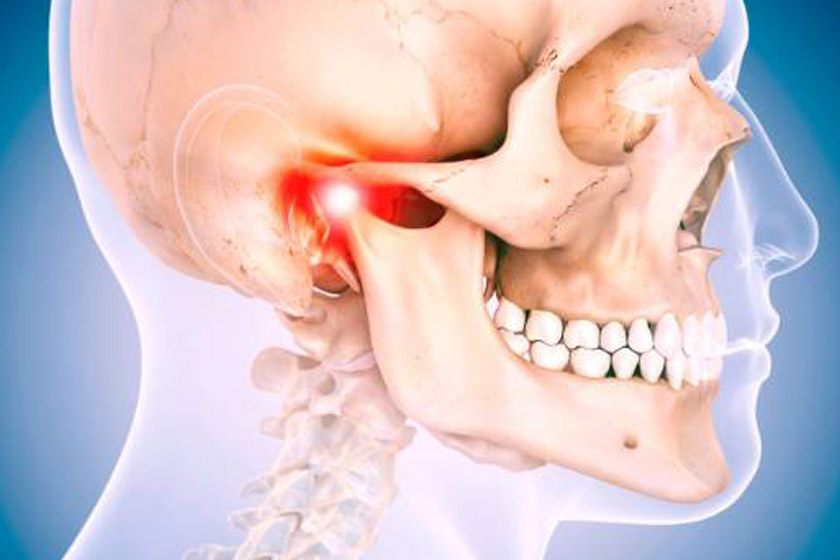
Disorders of the Temporomandibular Joint (Lower Jaw Joint)
In summary, it is a pain and dysfunction syndrome that november the temporomandibular joint (TMJ, Lower Jaw Joint ) and/or the chewing muscles. Disorders of the jaw joint are under the influence of a widespread cut today. It consists in the deconstruction of the harmony between the articular surface and the disc.
What Are the Symptoms of Lower Jaw Disorders?
- Experiencing pain when opening the mouth
- Squeak, click, click sound when opening and closing the mouth
- Limited ability to open or lock when opening the mouth
- Pain or stiffness in the neck
- Headache (not to be confused with migraine pain)
- Pain felt during chewing and on the face
- Pain that is felt when closing the teeth on top of each other
- A feeling of fatigue in the jaw when chewing
- Usually having difficulty opening the jaw and pain when getting up in the morning
- Having difficulty yawning
- Ear aches and ringing in the ears, rumbling-like sounds, feeling of blockage and pressure
- Sudden change in the shape of the junction of our upper and lower teeth
- November asymmetry, which may be due to hyperplasia of the facial muscles
- Deviation (shift) of the jaw when opening the mouth
What Are the Causes of Lower Jaw Joint Dysfunctions?
- Direct trauma to the jaw or joint area (as a result of an accident or impact)
- Onesided chewing habit
- Dental deficiencies
- Squeezing and gnashing teeth
- Stress, depression, etc.
- Nonphysiological tooth closure
- Developmental defects of the joint( hypoplasias, etc.)
- Degenerative joint diseases, osteoarthritis, arthrosis
- Autoimmune diseases, rheumatoid arthritis, lupus
- Unknown factors
Methods of Examination
- Examination of the teeth and the closing system
- Examination of the masticatory muscles november
- Examination of the jaw joint
Making a Diagnosis
For the diagnosis of jaw joint disorders, some auxiliary tests can also be used along with the examination. In addition, conventional or computed tomography and magnetic resonance imaging are also often used imaging methods. Rarely, scintigraphy or PET examinations may also be required.
Treatment
- Treatment of symptoms.
- Treatment of the underlying cause.
- Elimination of predisposing factors.
- Treatment of pathological effects.
What Are the Treatment Options?
- Patient education and preventive treatment
- Splint treatment
- Medication
- Exercises
- Physiotherapy
- Manipulation
- Psychiatric support
- Advanced treatments in late cases (Surgery, etc.)
In the Process of Treatment
- It is very important to reduce the load on the joints, and the patient needs to be removed from stress.
- Chewing gum and eating hard foods that will tire the jaw are prohibited.
- When yawning and sneezing, the mouth should not be opened excessively, the chin should be supported by hands.
- Biting movements should definitely not be done, food should be taken into the mouth in small pieces.
- One-sided chewing should not be done, food should be chewed in such a way that it is used on both sides.
- In cases where there is a lot of pain, until the process of contacting a doctor; pain relievers, muscle relaxants and anti-inflammatory drugs can be resorted to november
At the End of the Treatment Process
- Early and pathological tubercle contacts are corrected.
- The closure is checked, if necessary, the patient is referred to the orthodontic department.
- If there are dental deficiencies, they are eliminated through prosthetic treatments and a neutral closure is provided.
- If teething or gnashing continues, a psychiatric consultation is required.
As a result of these complementary therapies, the treatment process can be completed with full success. The treatment of TMJ dysfunctions requires a multidisciplinary approach, primarily patient compliance. Along with the treatment that the TMJ specialist will apply, it may also require the consultation of a physical therapist, psychiatrist, neurologist.
Apply Now for a healthy smile
Our Health Consultants Are Waiting For You… Fill Out the Form Immediately, Take Advantage of Discounts…



